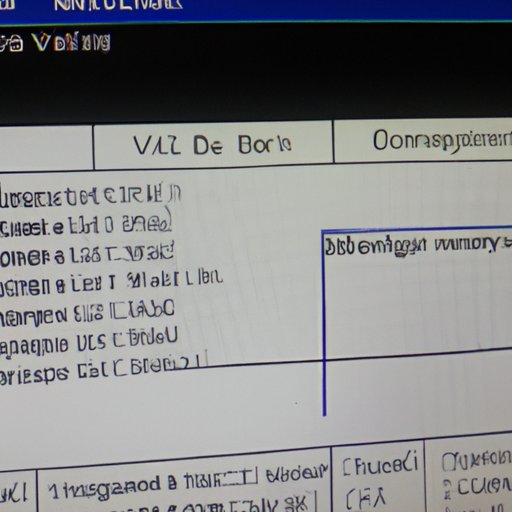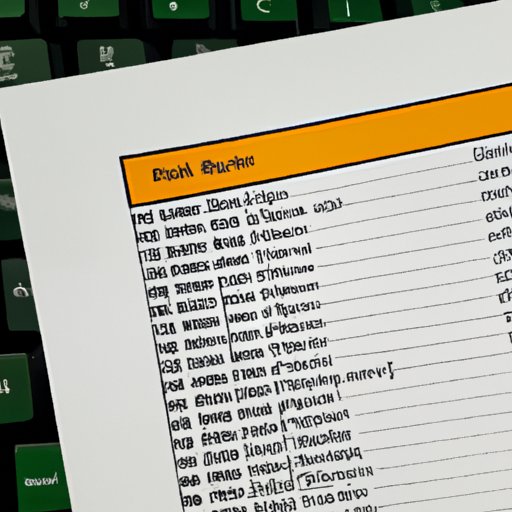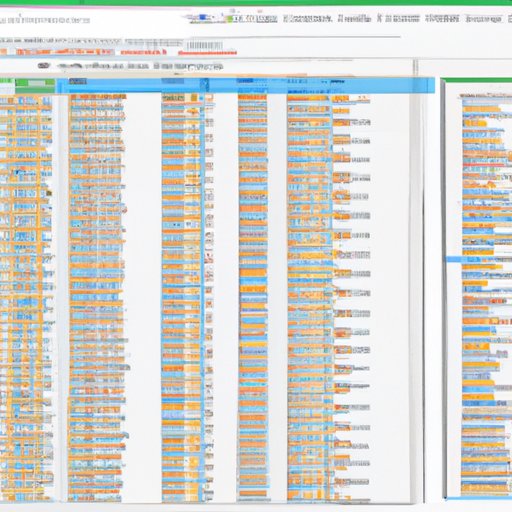Introduction
Excel is one of the most popular business applications used today. It’s powerful, versatile, and user-friendly. However, manually creating Excel reports can be time consuming. Fortunately, with Visual Basic for Applications (VBA), you can automate the process of creating Excel reports, making it faster and easier. This article will provide a high-level overview of automating Excel reports using VBA.
Basics of VBA
VBA is a programming language used to create macros and custom functions within Microsoft Office applications like Excel. A macro is a set of instructions that are recorded and stored within the application. When you run the macro, the instructions are executed, allowing you to automate tasks quickly and easily. For example, you could create a macro to automatically format a report or generate data from multiple worksheets.

Creating a Macro in VBA
Creating a macro in VBA is relatively straightforward. First, open your Excel workbook and select the Developer tab. Then click on the Visual Basic button. This will open the Visual Basic Editor window. In this window, you can create and edit your macros. To create a new macro, click on the Insert menu and select Module. This will create a blank module where you can type in your VBA code.

Writing a Simple VBA Script for an Excel Report
Once you’ve created your macro, you can start writing your VBA script. Writing a simple VBA script for an Excel report can be done in just a few steps. For example, you could write a script to delete empty rows in a worksheet, or to copy data from one worksheet to another. You can even write scripts to automate complex tasks such as creating charts or generating reports from multiple worksheets.

Advanced VBA Scripts for Complex Excel Reports
If you need to create more complex Excel reports, you can use more advanced VBA scripts. For example, you can use scripts to sort data, filter data, or perform calculations on multiple worksheets. You can also use scripts to create custom functions that can be used to manipulate data or calculate values.
Debugging VBA Errors
When you write VBA scripts, it’s important to debug any errors that may occur. Debugging is the process of finding and fixing errors in your code. The Visual Basic Editor has a built-in debugger that you can use to identify and fix errors in your code. You can also use the F8 key to step through your code line by line, enabling you to pinpoint the exact line where the error occurred.
Security Implications of Using VBA for Automating Excel Reports
Using VBA to automate Excel reports can have potential security implications. If you’re using VBA scripts to access sensitive data, it’s important to make sure your code is secure. You should always use the latest version of VBA and ensure your scripts are properly tested before deploying them. Additionally, you should use strong passwords and encryption techniques to protect your files.
Conclusion
In conclusion, automating Excel reports using VBA can save time and effort when creating complex reports. With VBA, you can write scripts to automate common tasks or create custom functions for manipulating data. It’s important to remember to debug your code and take steps to ensure the security of your data. For more information about automating Excel reports with VBA, please refer to the resources provided.
(Note: Is this article not meeting your expectations? Do you have knowledge or insights to share? Unlock new opportunities and expand your reach by joining our authors team. Click Registration to join us and share your expertise with our readers.)
